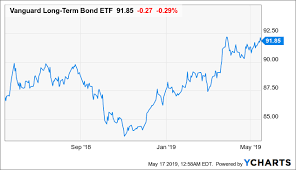Discussing the Best Consumer Staples ETFs
Jan 10, 2024 By Triston Martin
Introduction
Companies whose core offerings are necessities like food, drink, personal care products, home furnishings, and the like are monitored by the Consumer Staples industry group. Think of companies like Procter & Gamble, Coca-Cola, General Mills, Johnson & Johnson, etc. Demand for goods in this industry is non-cyclical and stable, as consumers are unable or unwilling to forgo their use. Some necessities see an uptick in demand during tough economic times. As a result, these businesses can count on reasonably stable revenue throughout the market cycle. Therefore, during market downturns, this industry tends to fare better than others.
That's why investors label these shares as safe. An overweight in Consumer Staples could provide diversification benefits and reduce volatility because these firms are less volatile than the market and have a relatively low correlation to the market of around 0.60. Additionally, dividend investors favor best consumer staples ETFs stocks because their dividends are typically both substantial and reliable.
Products such as food, drink, home goods, hygiene items, alcoholic beverages and tobacco are all included. Consumers will buy these items whether the economy is booming or tanking since they are needed. Therefore, stocks in the consumer staples sector are usually more steady and less volatile than those in other areas of the equity markets. Exchange-traded funds (ETFs) specializing in the consumer staples sector may be a good option for investors seeking diversified exposure to the sector.
Fidelity MSCI Consumer Staples Index ETF (FSTA)
The goal of FSTA is to replicate the equities' performance in the U.S. equity market consumer staples sector as measured by the MSCI USA IMI Consumer Staples Index. This ETF is a great way to gain exposure to a diverse group of companies that produce essential goods and services. Its primary targets are companies in the grocery store, beverage, food, and home goods sectors. Large-cap stocks, with some mid- and small-caps and micro-caps, make up the fund's holdings. In terms of portfolio composition, Procter & Gamble, Coca-Cola, and PepsiCo are the three largest holdings of the Food and Beverage Technology Association (FSTA). Nothing herein should be construed as personal investment advice or a suggestion to buy or sell any security or to engage in any particular investment strategy.
Despite our confidence in the information presented here, we make no guarantees of its accuracy or completeness. Not all readers will agree with our opinions or find our techniques advantageous. All views, opinions, and analyses expressed in our material are made as of the publishing date. They are subject to change without prior notice due to the dynamic nature of the market and economic situations. Nothing herein should be construed as a recommendation or endorsement of any particular country, location, market, sector, investment, or strategy. Play without worry with $100,000 in play money. Try your hand at stock trading with our no-cost simulator. Use Investopedia's market data to compete with other traders around the world. Test your trading strategies in a simulated setting rather than with real cash. It would help if you tried several trading tactics on a virtual platform before venturing into the actual market.
What are Consumer Staples ETFs?
A moniker like "consumer defense" should give you an indication of where these funds are put to use. Stocks of companies producing consumer essentials, such as toilet paper and milk, may underperform the market during economic expansions and stock market rallies since people don't spend additional money on these items. You have a consistent consumptive pattern regarding food, drink, and homewares. You aren't doubling your Clorox purchases during the bull market, are you?
Consumers' discretionary spending decreases during recessions. That's bad news for the consumer discretionary industry, which takes a hit as a result because less money being spent on things like electronics, clothes, and restaurants is certain. Stocks of companies providing discretionary goods to consumers suffer when disposable income falls. This industry benefits from a good hedge during booms and a smart play during busts because consumers will continue to spend money on necessities such as food and toilet paper regardless of the economy.
Vanguard Consumer Staples ETF (VDC)
To be expected, Vanguard's consumer staples ETF ranks highly, as it does on virtually every "best of" list for exchange-traded funds. VDC has been around since 2004 and has collected $5.4 billion in assets at a paltry expense ratio of 0.10%. VDC is one of the least expensive consumer staples funds to hold and trade, with an average spread of 0.03%.
Among its 92 assets, VDC is another market cap-weighted index fund. Companies like Procter & Gamble, Coke, PepsiCo, Walmart, and Philip Morris USA are likely household names. The top 10 stocks make up nearly 66% of the fund's total holdings, despite the fund's relatively large number of stocks. The fund's overall assets are similar to those of similar vehicles, with a heavier emphasis on food and cigarette companies. The average daily volume for the fund is around 126,000 shares, and it offers a dividend of 2.33%. Even though it is no longer the least expensive fund and does not offer the best yield, VDC is a good investment and trades without commission in Vanguard brokerage accounts.
Conclusion
Over the past year, the consumer staples industry has performed better than the overall market. Exchange-traded funds (ETFs) XLP, FXG, and FSTA have had the highest total returns over the past year among those focusing on consumer staples. These ETFs have Procter & Gamble Co. as their largest holding in the first and third and Archer-Daniels-Midland Co. in the second.
-
 Investment May 09, 2024
Investment May 09, 2024Everything You Should Know About MetLife Insurance
MetLife offers term, whole, universal, and MetLife burial insurance. Policies let customers tailor coverage, add riders, and pick payment terms.
-
 Savings Sep 16, 2024
Savings Sep 16, 2024Secure the Best Savings Rates: 5 Tips to Earn More in 2024
How to earn the highest interest rate on a savings account in 2024 with these expert tips. Maximize your savings with the best strategies to secure top interest rates
-
 Investment Dec 22, 2023
Investment Dec 22, 2023Alternative energy mutual funds: Overview
Alternative energy mutual funds provide energy companies access without having to select stocks yourself. GAAEX, NALFX, NEXTX, and FSLEX are the top-rated alternative energy mutual funds for 2022. Which are the best alternative energy funds to invest in right now? And, is the clean energy industry even worth your money? Read on to explore.
-
 Banking May 07, 2024
Banking May 07, 2024Personal Loan Payments Impact: How Extra Payments Matter
Explore how making extra payments on your personal loan can drastically reduce interest costs and shorten loan tenure, facilitating quicker financial freedom.


